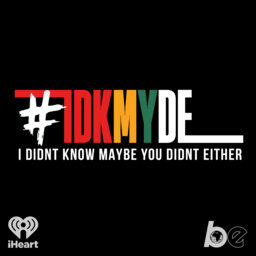We take you on a journey through the innovators and pioneers who put Black beauty on the map. Nodding at the past, we'll introduce some new engineers that have taken over the industry (like RiRi).
On today's special episode of I didn't Know, Maybe you didn't either. As we partner with Nissan, we highlight Trailblazers and steam Whiles, staying true to discovery in Black history. So, whereas I know you're probably familiar with Madam C. J. Walker, what come the only overton I knew played and living single? I didn't know, No, I didn't know. I didn't know. I didn't know. I didn't know. I didn't know. I didn't know. I didn't know. Now, when it comes to discussing the beautification of Black folks from past to present, in season one, we discovered the ingenuity of enslaved black folks when braiding hair right different patterns they were put in the hair. There were actually maps used in the aid of escape. They stashed rice and any gold or riches they may have come across in the braids to help them start a new life elsewhere, and the rice would be for food on the journey. Now that's totally different from the braids in the sixties. In the sixties, folks was braiden hair to be fly, and we still do that to this day. I got to get something done to mine every two weeks. Do you dig what I'm saying now. Rosa Malachiel Johnson, she took braidon to a whole nother level when she started in the seventies. Like she's named the Queen Mother of Braiden Now. Her initial clients were her four kids and a very notable name, Red Fox. Yeah, she realized she could support her family from braiden hair and went full throttle with it. Her most notable clients is Stevie Wonder and she said he loved them being the more the better. She said he loved the weight of them and how they look or how people told him they looked. Listen, you never know with Stevie. I hadn't seen Stevie want to shoot free throws and her stories of Steven driving folks home after parties. Either way, Rosa Malachiel Johnson would match the bead colors to the album themes. She was introduced to African culture by her aunt Angelus, and she currently has an exhibition in Winston Salem called Straw into Gold, and it displays her word. We're also very familiar with the life of Madam CJ. Walker, who revolutionized the hair industry with cosmetics and haircare products for black women in the early nineteen hundreds. Madam CJ. Walker is also recorded by the Againness Book of World Records as the first female self made millionaire in America. When you talk about the history of hair care and beauty, even headscars, those ain't just warn because it's Tuesday and since don't get her hair down to Friday. Nah, those are rooted in black history too. You can trail it back to the seventeen hundreds down in Louisiana when women of color would have to wear scars. They were called tions as a sign of their status as enslaved individuals. But what about makeup? Well, this season, we introduced you to Bernardine Anderson, the first black woman, the first black person period to work in the film industry, a trailblazer in the late sixties, and before that, in eighteen ninety eight, Anthony Overton. He had a hygienic manufacturing company and he was booming that high brown face powder. They had a variety of shades nut brown, olive tone, brunettes, and flesh pink. Now listen, that last one had your boy confusion. How these products for black women with a flesh pink name for one who's flesh is pink. Mister Overton see mister Overton. He had four shades. Rihanna's fencyline now has fifty shades. I digress because Anthony Overton became the first black person to lead a major business conglomerate with his hygienic manufacturing company. He even got an elementary school named after him in Chicago, and he was born in Louisiana. Also, this season of I Didn't Know, maybe you didn't either. Of course, we partnered with Nissan to highlight living history that's trailblazing in areas of state science, technology, engineering, arts and math. And when it comes to cosmetics, you're talking about women like Borlanda Addis. She's a cosmetic chemist and she's been with loorel since nineteen ninety nine. In twenty fourteen, she became the manager of a lab opened by L'Oreal dedicated to developing cosmetics for a range of skin tones. She created the foundation that Lupita Niango wore in Laoreal ads. In twenty twenty, l magazine named Borlanda Addis one of ten Black women making history, living history trailblazing in the science of chemistry for the advancement of the beautification of black folks, one beat face at a time, and I didn't know. Maybe you didn't either, I didn't know
 I Didn’t Know, Maybe You Didn’t Either!
I Didn’t Know, Maybe You Didn’t Either!


